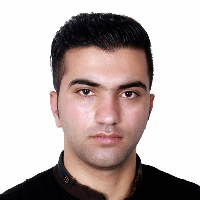The Effects of Hydrotherapy on Pain, Range of Motion, and Quality of Life After Joint Replacement in the Elderly Women With Knee Arthritis
Osteoarthritis is the most common articular and musculoskeletal disease, globally. It is the most prevalent complication in synovial joints, also known as osteoarthritis, osteoarthritis, and hypertrophic arthritis. The exact etiology of osteoarthritis remains unspecified. However, age, gender, genetic issues, congenital defects, overweightness, the overuse of joints in daily living activities or special occupations, severe physical activity, muscle weakness, structural abnormalities, and neuromuscular disorders are among the effective factors in this respect. Despite numerous therapeutic approaches used in patients with orthosis, no definitive non–surgical treatment has been found. Furthermore, the progression of the disease has continued and surgery is the last option for patients with an orthosis. Therefore, the current study aimed to investigate the effects of hydrotherapy on pain, Range of Motion (RoM), and Quality of Life (QoL) after arthritis replacement in elderly women with knee arthritis.
This was a quasi–experimental study with a pretest–posttest and a control group design. The statistical population of this study included the elderly female patients in the age range of 55–70 years who were referred to orthopedic specialists in Shohada Hospital with grade 4 knee arthritis and undergoing one leg knee replacement surgery by a specialist in 2017. According to Krejcie and Morgan’s Table (1970), 40 patients with 6 months past surgery was voluntarily selected as the study sample. Then, they were randomly divided into two experimental and control groups (n=20/group). However, 4 samples in the experimental group withdrew due to familial and financial problems; subsequently, the experimental group sample size was reduced to 16 subjects. The inclusion criteria of the study, according to the opinion of the orthopedic specialist, were as follows: adopting a similar lifestyle (approximately equal extent of daily activities); non–regular or irregular use of steroidal and Nonsteroidal Anti–Inflammatory Drugs (NSAIDs) within 2 months prior to entering the study, and osteoarthritis only in the knee joint. On the other hand, the study subjects' non–cooperation with the researchers and absence from >3 intervention sessions were considered as the exclusion criteria. Furthermore, before and after conducting the treatment, the Knee injury and Osteoarthritis Outcome Score (KOOS) (Roos et al., 1998) was used to assess pain and QoL. Besides, an electro–goniometer was applied to measure RoM in the study participants. The experimental group performed 18 sessions of the hydrotherapy training program in 3 sessions per week for 6 weeks; each session lasted 45–60 minutes. According to the physiological rules, the study subjects first conducted warm–up activities, such as walking, marching, going forward, walking backward, stepping sideways (for 10 minutes). Then, lower extremity exercises were performed for 30 minutes, (stretching & non–weighted power movements, orderly). Eventually, the research subjects were allowed to cool down for 5 minutes and return to the baseline level. The obtained data were analyzed using Paired Samples t–test for intra–group and Independent Samples t–test for analyzing the differences between groups at the significance level of 0.05 in SPSS.
The results of the intergroup test indicated that after providing hydrotherapy training, the pain was significantly decreased in the exercise group (p<0.001). Accordingly, RoM (p=0.011) and QoL (p<0.001) were significantly increased in the exercise group. The results of the in–group test also signified that pain was significantly decreased (p<0.001) and RoM (p=0.001) and QoL (p<0.001) were significantly increased in the test group.
According to the current study findings, hydrotherapy exercises provided positive effects on the study participants. Furthermore, due to the numerous benefits of water–based exercises to patients with knee osteoarthritis, they can be considered as a complementary and useful method along with other conventional physiotherapy and pharmacotherapy approaches. The achieved data highlighted the importance of the rehabilitation of patients with knee arthroplasty and similar characteristics and conditions.
- حق عضویت دریافتی صرف حمایت از نشریات عضو و نگهداری، تکمیل و توسعه مگیران میشود.
- پرداخت حق اشتراک و دانلود مقالات اجازه بازنشر آن در سایر رسانههای چاپی و دیجیتال را به کاربر نمیدهد.


